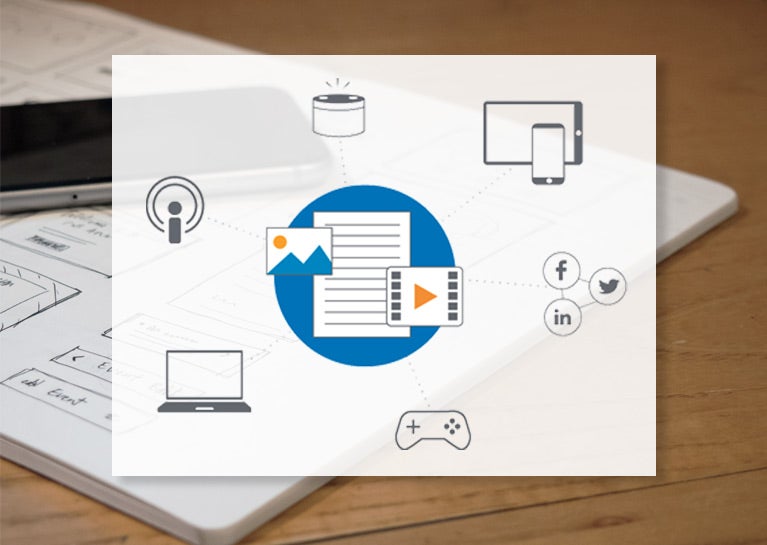
Last year was a big year for me. I left a company I’d been with for fifteen years to join BlueModus, where the first six months have been wonderful. After joining this larger organization, I am surrounded by smart, talented people crossing multiple disciplines, so there’s a constant flow of knowledge and ideas. Therefore, 2018 did not just bring a new team, and new customers, it brought a new approach to content.
I have been a proponent of a structured-content approach for a while, after being inspired by the Kentico community, including impactful content like Joel Dahlin’s article Tips for Creating Page Types in Kentico and Brenden Kehren’s answers on Kentico DevNet. Little did I know the structured-content approach was just the tip of the iceberg. In short, this approach encourages managing content in Kentico’s content tree, with custom page types and fields, instead of managing content directly within the page design. Authors spend more time in Kentico forms than in edible web parts and widgets, allowing them to be responsible for the content without being responsible for maintaining the website design. As a refresher, the structured-content approach entails separating content from presentation, and provides the following benefits:
- The ability to easily implement and enforce compliance requirements for brand, accessibility (WCAG 2.0) and SEO.
- Simple and instructive authoring experiences using Kentico forms. (I’ve heard “it’s so easy” from multiple authors.)
- The ability to upgrade or even replace designs without requiring content migration or re-entry.
- Future-proof solutions. Structured content can survive a complete web redesign, front end rebuilds, or even an upgrade to Kentico 12’s MVC-based architecture.
The Advantages of Putting Content First
The benefits of the structured-content approach are significant. At BlueModus, we promote a content-first philosophy, where content drives web design and digital strategy, so joining the team meant expanding these benefits to include content-centric strategic value. Plus, we encourage a multi-channel content repository, in which content is leveraged across multiple channels. With this approach, content is not only separated from the presentation, it no longer belongs to a single system. This results in a unified content model, in which content is utilized across many channels, including websites, emails, social media, digital marketplaces, and even voice-enabled digital assistants. The content is treated as a first-class citizen, an important asset across the entire enterprise.
As a headless CMS, Kentico Cloud lends itself very well to this content-centric approach. Naturally, in a headless platform, content is authored, organized, and managed in a separate content repository, and it provides APIs to enable the content to be leveraged across multiple channels. In fact, many of Kentico Cloud’s benefits exist due to the emergence of headless CMS platforms as a solution to support the content-first and multi-channel approaches. However, strategic-minded customers, like one I'm working with now, are adopting this method even when choosing an on-premise CMS system like Kentico EMS. This customer is using the content-first approach to drive their design and is creating Web APIs to use Kentico EMS as a headless platform to support multiple marketing channels.
While this will provide them all the benefits of the structured content approach, the main reason this client is adopting this strategy is to empower them to compete in the ever-changing marketplace. They realize that having a new, responsive, SEO-optimized website is no longer enough. Users are no longer navigating to custom websites to find information. At least, not as much. For example, when consumers are looking for information, they will likely start with Siri, Google Assistant, or Alexa. If they use a search results page, they may not even navigate to a traditional website, likely finding their answer from a featured snippet or answer box for their results. Even shoppers are increasingly more likely to pick a product and choose a provider before leaving a search result page. As customers engage information in social media, in digital assistants, and in digital marketplaces more and more, businesses must engage customers where they’re at, which requires structured content that can be leveraged across multiple channels.
Using Kentico EMS as a multi-channel, headless CMS platform involves creating content models that can be used across multiple channels, including articles, products, promotions, and even calls to action. It also requires developing a Web API to enable multiple systems to access the content. By using Kentico EMS’s online marketing features, the content can be dynamic, and its customer interaction measured.
Be Prepared for the Challenges...
Although the multi-channel, headless CMS approach has significant benefits, it also comes with its challenges. Like any technology solution, it’s not pixie dust. It requires commitment and investment to get it right. For example, most content authors are familiar with traditional CMS platforms, in which they create and edit content directly within the design. They have immediate access to the information context, and they don’t have to worry about where else the content may be used. It can be challenging to move from this familiar mindset to a headless CMS that requires navigating libraries and lists of content. It takes more effort to keep such a content repository organized, so that content remains useful and leverageable. In contrast to editing throwaway content within a design surface, it’s much harder to write and manage content to be utilized throughout multiple channels.
Achieving the promise of the multi-channel, headless CMS approach requires addressing these challenges. Content reuse requires people to know it exists and to be able to find it. This requires careful maintenance and governance of the content repository and may even require organizations to define new roles and responsibilities. Additionally, when content becomes a first-class citizen, the content authors need to be treated as a first-class audience for the solution. To ease their transition, be sure to provide the fit and polish needed to give them a great user experience.
So, if you’re implementing a CMS or even redesigning your website, I encourage you to design it using the content-first approach and implement it to support multiple channels. The digital landscape is changing, and new channels are emerging fast, so even if you’re not implementing a headless CMS, now is your chance to prepare. Or, if you are already taking this plunge, be prepared to address the new challenges, to organize and govern content, and to enable authors to successfully adopt the new approach. And finally, if you’d like our help to plan your content ecosystem, please give us a call.










